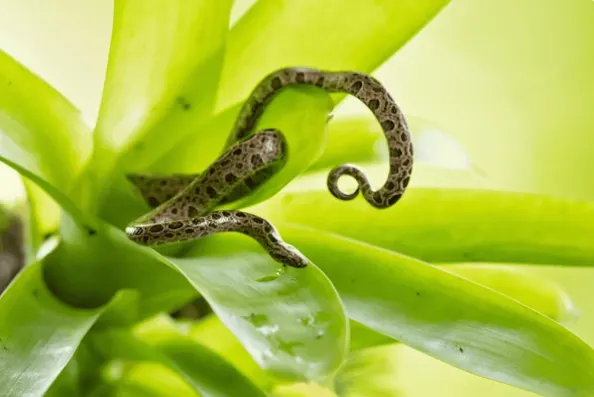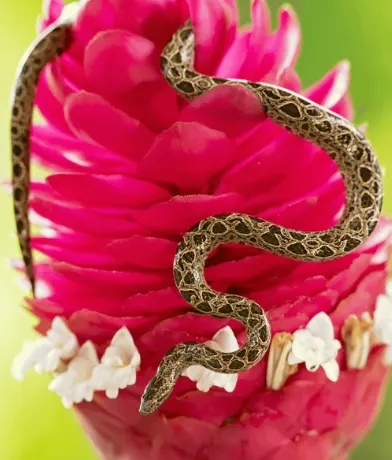The dwarf boa is one of nature’s most fascinating creatures, offering a scaled-down version of the mighty boa constrictor. Despite its smaller size, this snake exhibits a range of unique characteristics and adaptations that make it a true wonder in the reptile world. Native to parts of Central and South America, the dwarf boa has captured the attention of snake enthusiasts, scientists, and even pet owners. In this article, we’ll dive into the biology, behavior, habitat, and conservation of this incredible species.

Table of Contents
What Is a Dwarf Boa?
The term “dwarf boa” doesn’t refer to a single species but rather a group of small boas. These snakes typically belong to the Boidae and Tropidophiidae families, and their small size sets them apart from the larger boas. They can range anywhere from 12 inches to around 6 feet long, depending on the species. Their smaller stature doesn’t make them any less fascinating; in fact, it’s what makes them so unique and appealing.
Why Are They So Small?
There are two main reasons for the dwarf boa’s small size. First, many of these snakes evolved in isolated environments like islands or cloud forests, where smaller sizes provided a survival advantage. In such environments,
Second, selective breeding has also played a role. Some dwarf boas are the result of captive breeding programs designed to produce smaller boas for the pet trade. These boas still possess all the typical boa traits but are more manageable in size, making them ideal pets.
Fascinating Facts About Dwarf Boas
- Color-Changing Ability: Some species of dwarf boas can change color, shifting from darker shades during the day to lighter shades at night. This color change helps regulate their body temperature and provides excellent camouflage from predators.
- Vestigial Pelvis: Dwarf boas have a vestigial pelvis, a relic of their evolutionary history that hints at a time when their ancestors had limbs. This feature is a fascinating clue to their past and serves as evidence of their evolutionary journey.
- Ambush Predators: Like their larger relatives, dwarf boas are skilled ambush predators. They rely on stealth and patience, waiting for unsuspecting prey like small mammals, birds, and lizards to come within striking range. Once close enough, the boa coils around its prey and constricts, suffocating it before swallowing it whole.
Where Do Dwarf Boas Live?
Dwarf boas are found in various habitats across Central, North, and South America. Some inhabit tropical rainforests, while others are found in dry forests or high-altitude cloud forests. A few species, such as those from the West Indies and the Solomon Islands, live in particularly isolated environments where their small size is an advantage.
Natural Habitats
- Tropical Rainforests: These lush environments offer an abundance of prey and shelter, making them ideal for many dwarf boas. The dense vegetation provides plenty of hiding spots, allowing the snakes to remain hidden from predators and sneak up on their prey.
- Cloud Forests: Dwarf boas from the cloud forests of northeastern Ecuador are particularly interesting. The cool, misty environment creates unique challenges, such as finding warmth and
food , and these boas have evolved to thrive in this niche habitat. - Islands: Some dwarf boas are island-dwellers, found in places like the Tarahumara region of Mexico and the islands near Panama. These environments often lack large prey, so smaller snakes are better suited for survival.
Popular Species of Dwarf Boas
While the term “dwarf boa” encompasses many species, some are particularly popular or well-known.
- Hog Island Boa: Once believed to be extinct in the wild, the Hog Island boa is now a popular pet species. It hails from the islands off the coast of Honduras and typically grows to around 4-5 feet. This snake is known for its pale coloration, which helps it blend in with the sandy terrain of its natural habitat.
- Corn Island Boa: Another island boa, the Corn Island boa is found off the coast of Nicaragua. Like the Hog Island boa, this species stays relatively small, with adults typically reaching around 5 feet in length. They have a striking coloration of light brown with darker patches.
- Tropidophiidae Dwarf Boas: These boas are not true boas but belong to the Tropidophiidae family, also known as dwarf boas or thunder snakes. They are often mistaken for boas due to their appearance, but they are more closely related to false coral snakes. These boas are highly secretive and difficult to observe in the wild.
Dwarf Boas as Pets
One of the reasons for the popularity of dwarf boas is their suitability as pets. They are much more manageable in size compared to full-grown boa constrictors, and they tend to be gentle and calm.
Pros of Keeping a Dwarf Boa
- Small Size: For those who love boas but don’t have the space or desire for a 14-foot snake, dwarf boas are the perfect alternative. Their smaller size makes them easier to house and handle.
- Gentle Nature: Dwarf boas are generally not aggressive. While they can bite if provoked, they are usually calm and docile, making them easier to manage for beginners and experienced snake owners alike.
- Unique Appearance: Their ability to change color and their variety of natural patterns make them visually striking pets.
Challenges
However, keeping a dwarf boa as a pet does come with its challenges. They require specific care to thrive, such as:
- Proper Habitat: Dwarf boas need an enclosure that mimics their natural environment. This includes temperature gradients, appropriate humidity levels, and plenty of hiding spots.
- Diet: Feeding them appropriately sized prey is essential. While they may be small, their appetite isn’t, and it’s important to provide them with a balanced diet of small mammals, birds, or lizards.
- Handling: While they are generally easy to handle, it’s important to be mindful of their moods. Like any animal, dwarf boas can become stressed if mishandled or overhandled.

Conservation Status
The conservation status of dwarf boas varies depending on the species. Some species, like those from the Tropidophiidae family, are considered vulnerable or endangered due to habitat destruction and other human activities. Others, like the Hog Island boa, have seen populations increase thanks to conservation efforts and captive breeding programs.
Conservationists are particularly concerned about habitat loss, which poses the greatest threat to many dwarf boa species. Deforestation, urbanization, and agriculture are all contributing to the destruction of their natural habitats. In some cases, dwarf boas are also at risk from illegal poaching and the pet trade.
Nature’s Small Yet Mighty Snakes
Dwarf boas are a true testament to nature’s ability to adapt and thrive in various environments. Their small size, unique evolutionary traits, and gentle nature make them fascinating creatures both in the wild and as pets. Whether you’re interested in their biology, looking for a pet snake, or concerned about their conservation, dwarf boas are an incredible example of how much nature has to offer—even in the smallest of packages.
In a world where bigger often seems better, the dwarf boa reminds us that greatness can come in smaller forms too. These snakes may be compact, but they are undoubtedly powerful and endlessly captivating.
- Enchi Ball Python: A Unique and Stunning Morph of Python regius - March 27, 2025
- Emerald Tree Monitor: The Enigmatic Green Guardian of the Rainforest - March 26, 2025
- The Egyptian Cobra (Naja haje): A Fascinating Serpent - March 25, 2025
